Tucked beneath the slopes of Mount İdiş in Cappadocia, Özkonak Underground City offers a quieter, more mysterious alternative to its neighbors, Derinkuyu and Kaymaklı. Discovered in 1972 by a curious local farmer, this subterranean labyrinth extends nearly 10 km between entrances and reaches depths of up to 40 meters across ten levels—though only four are open to visitors today. Carved into the soft volcanic tuff, Özkonak blends architecture, defense, and communal living into a striking underground world. With wine cellars, ventilation shafts, narrow escape holes, and stone‑rolling doors, it’s a physical reminder of early ingenuity and survival.
For a seamless visit, consider booking a combined Red & Green Tour—a great way to pair Özkonak with surface sights like Pigeon Valley, Göreme Open Air Museum, and Monks Valley.
A volcanic refuge carved in soft stone
The story of Özkonak begins in the dense tuff layers formed by volcanic ash and lava flows in Central Anatolia’s ancient past. This soft rock was easily carved, making the area home to some of Cappadocia’s most famous rock-cut architecture. By the early Byzantine era (5th–6th century CE), inhabitants began excavating to create subterranean refuges against marauding armies and natural threats, with each new generation deepening and expanding the underground city.
Structure and defensive design features
Özkonak is architecturally distinct—even among Cappadocia’s many underground cities. It spans ten levels, though today only four are accessible to the public. An ingenious pipe-based ventilation system reaches every floor, a rare design feature compared to other sites.
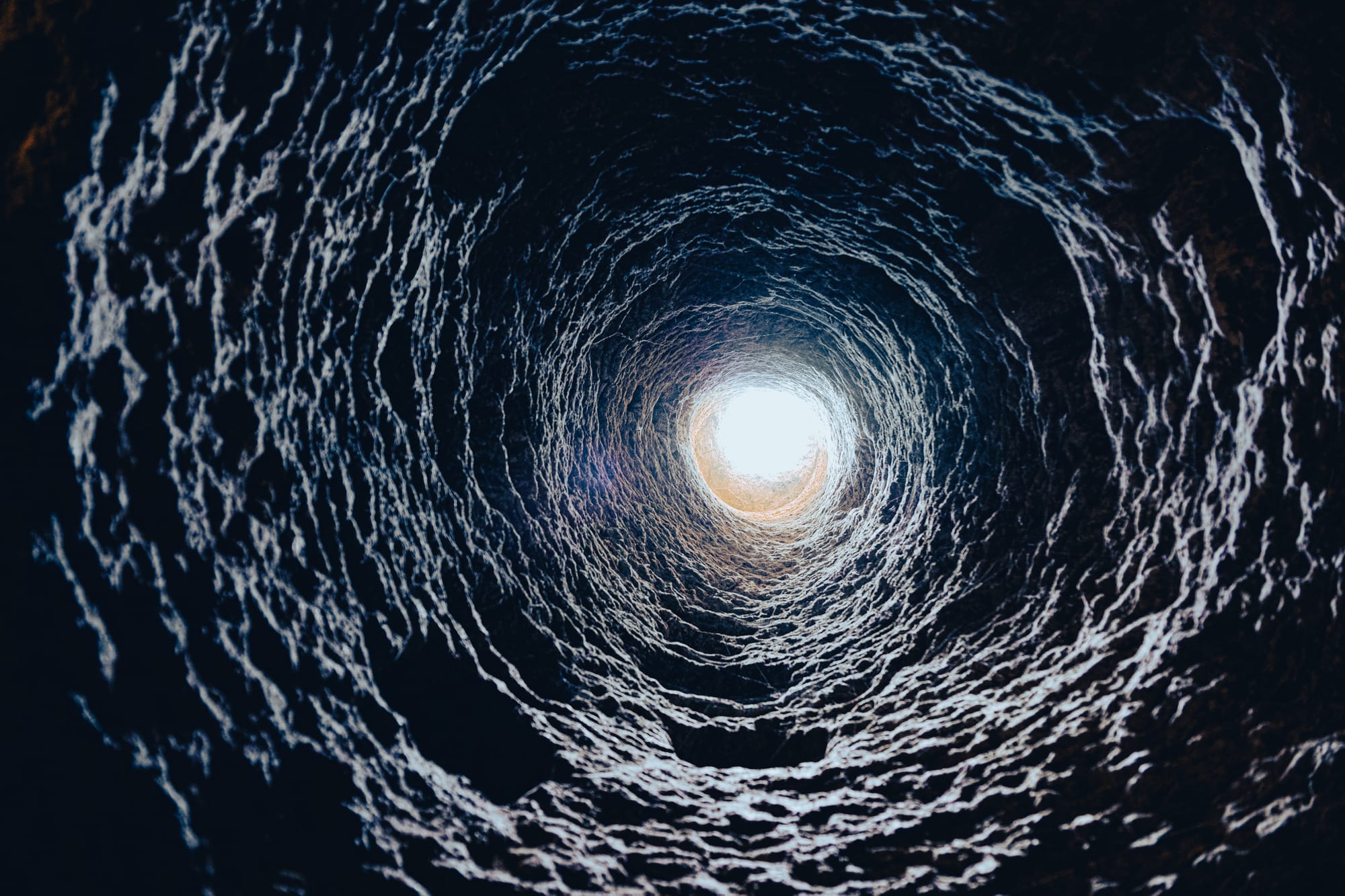
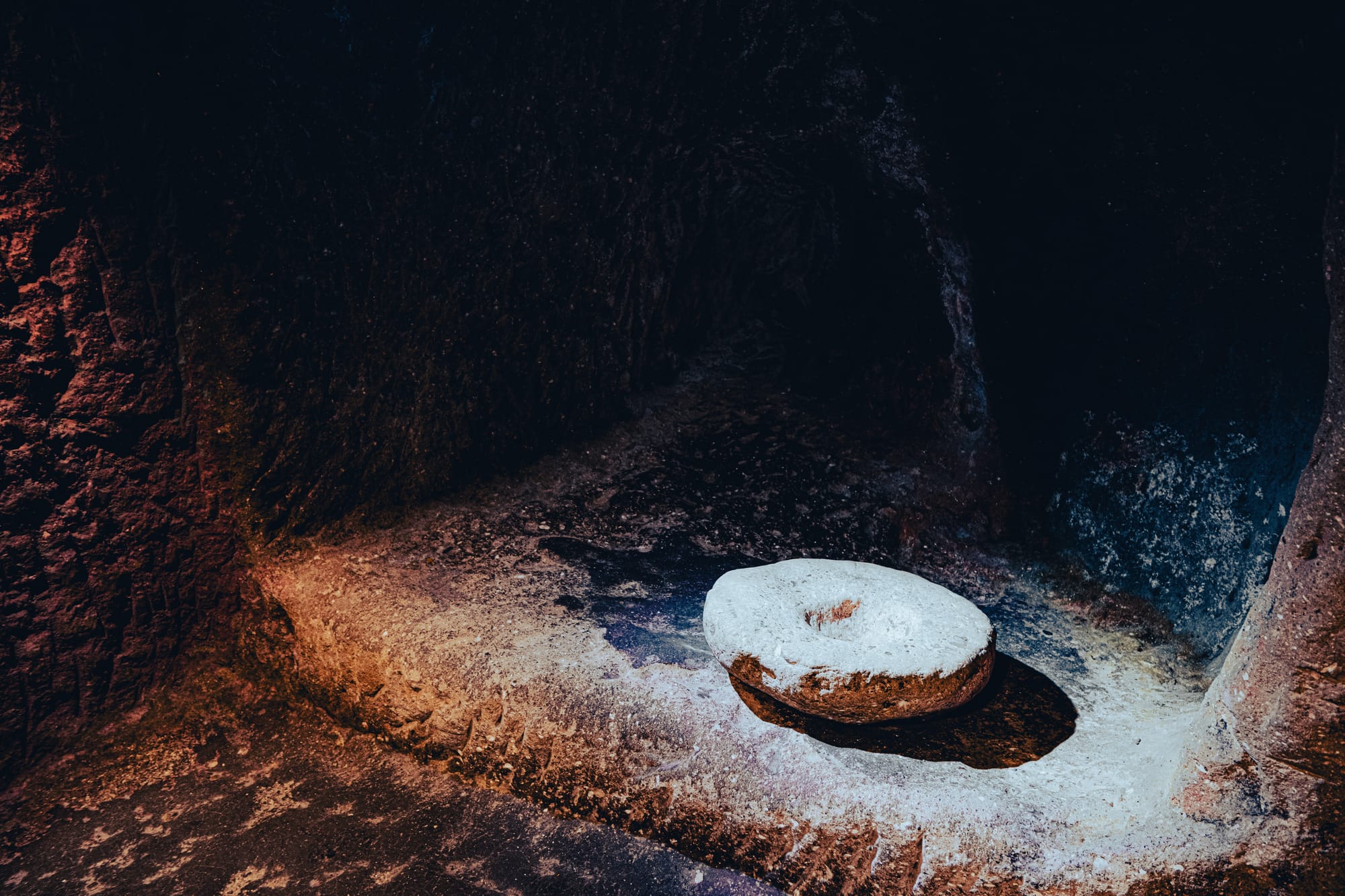
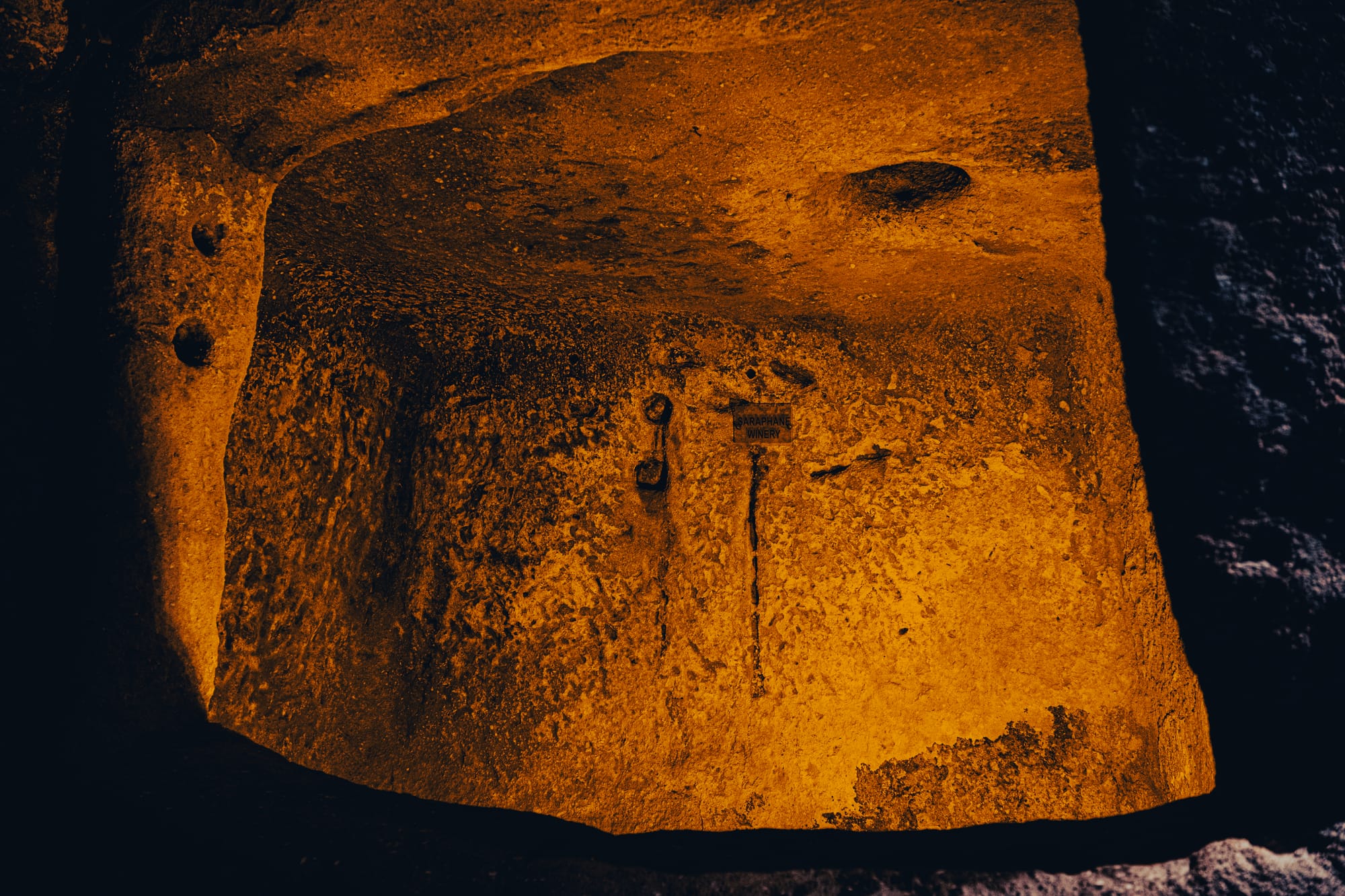
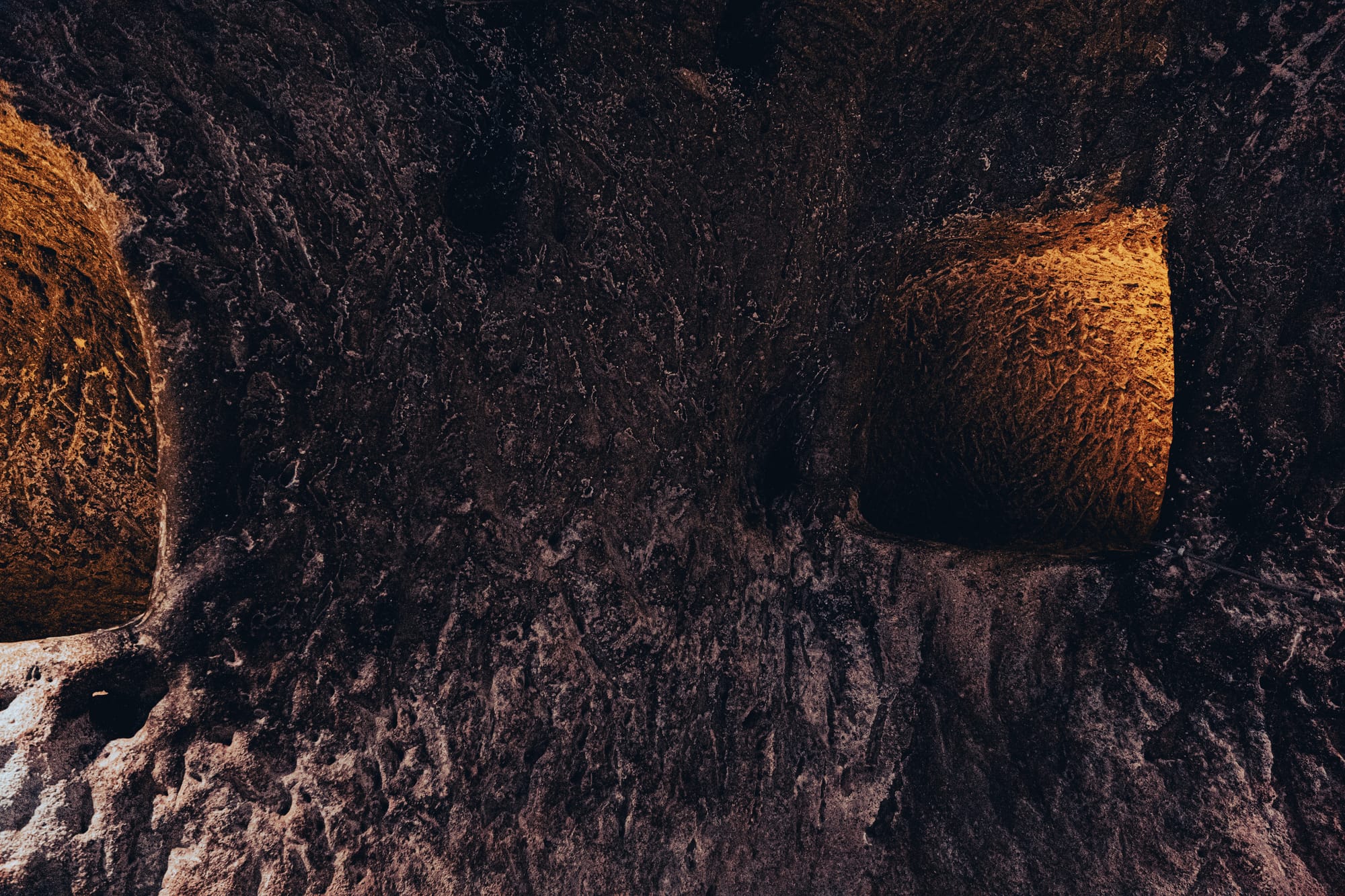
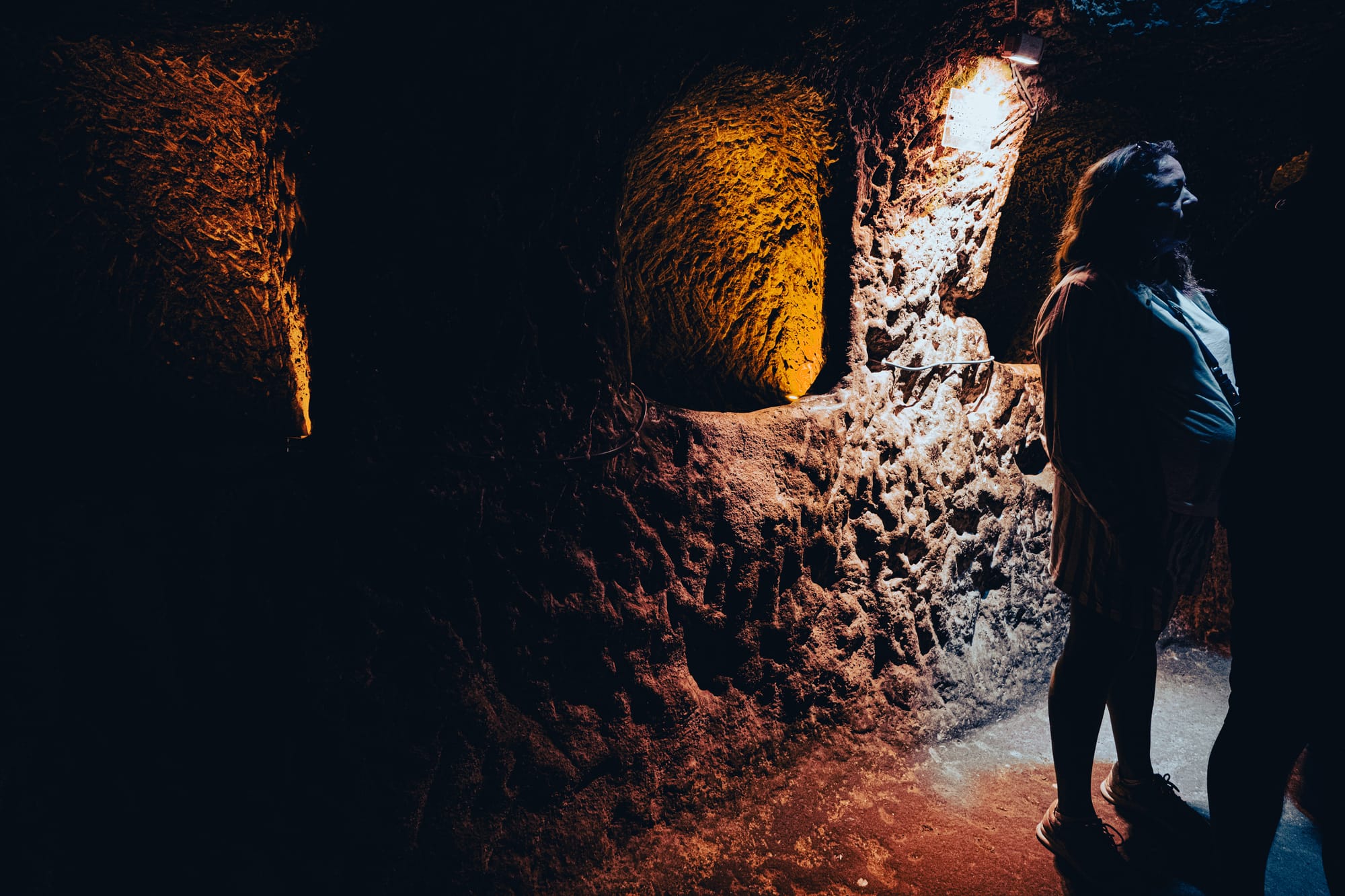
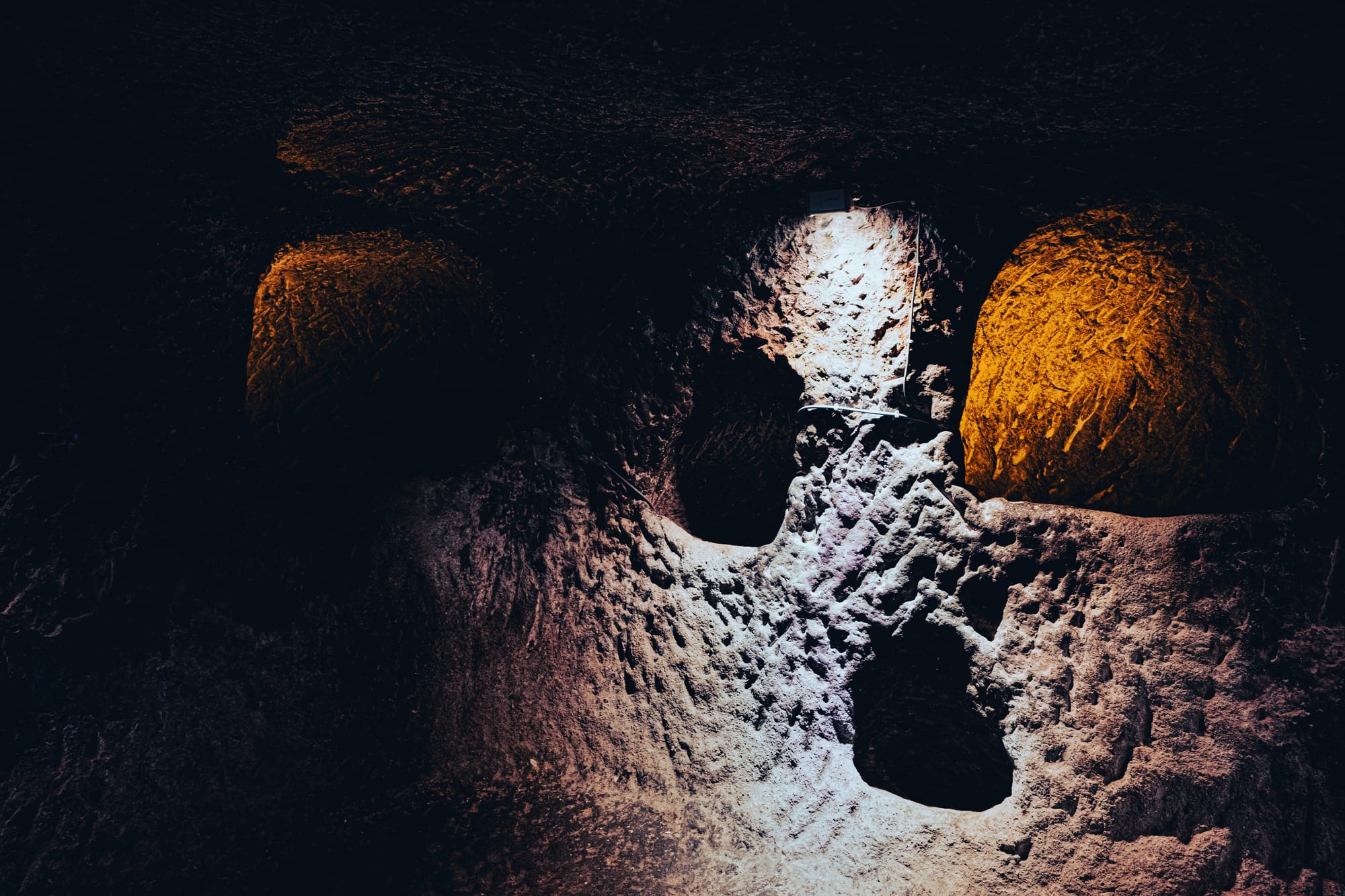
Dimly lit chambers reveal the fascinating carved interiors of Özkonak Underground City
Crucially, inhabitants built rolling stone doors—some nearly two meters tall—for sealing off chambers in emergencies.
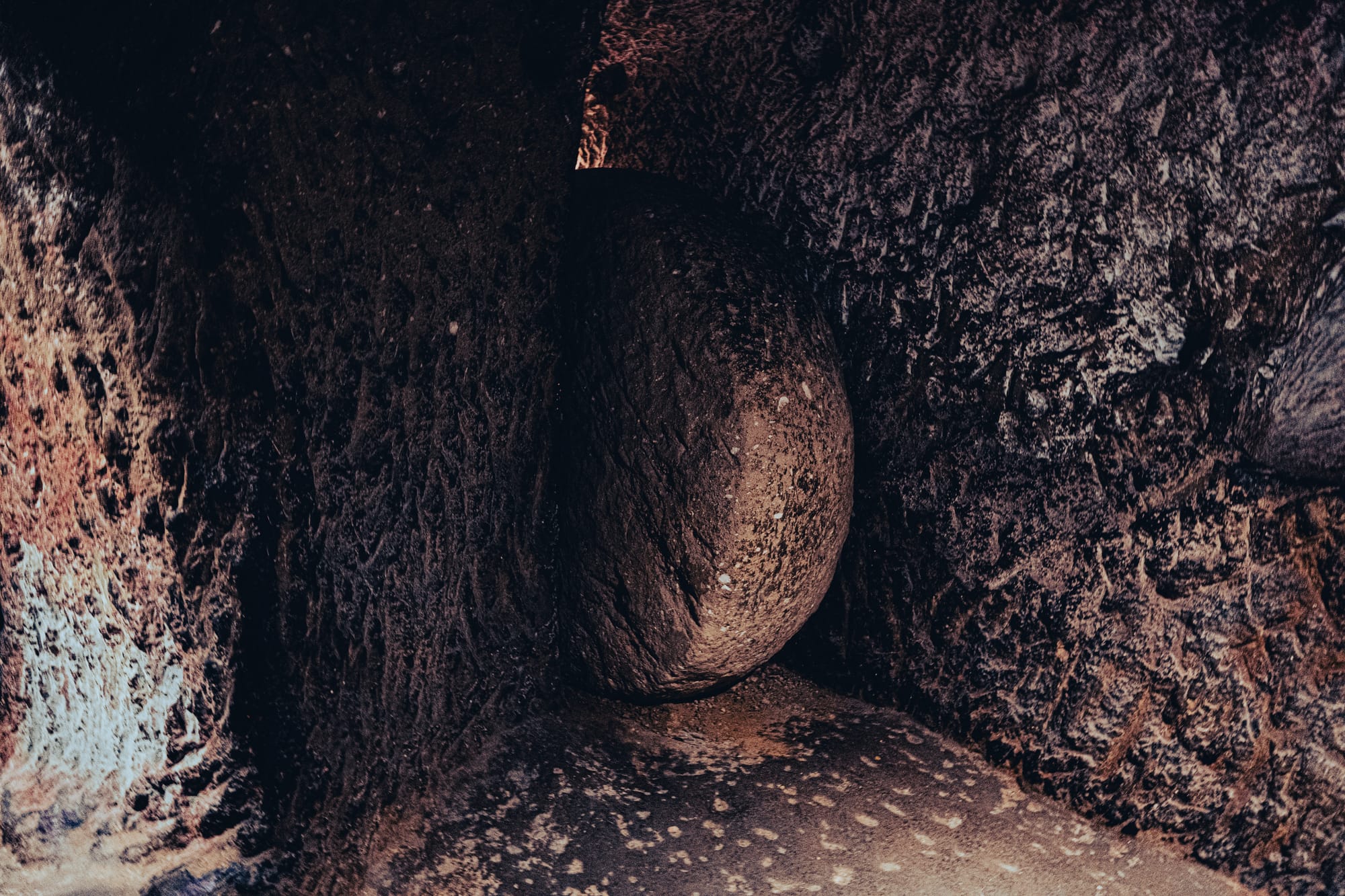
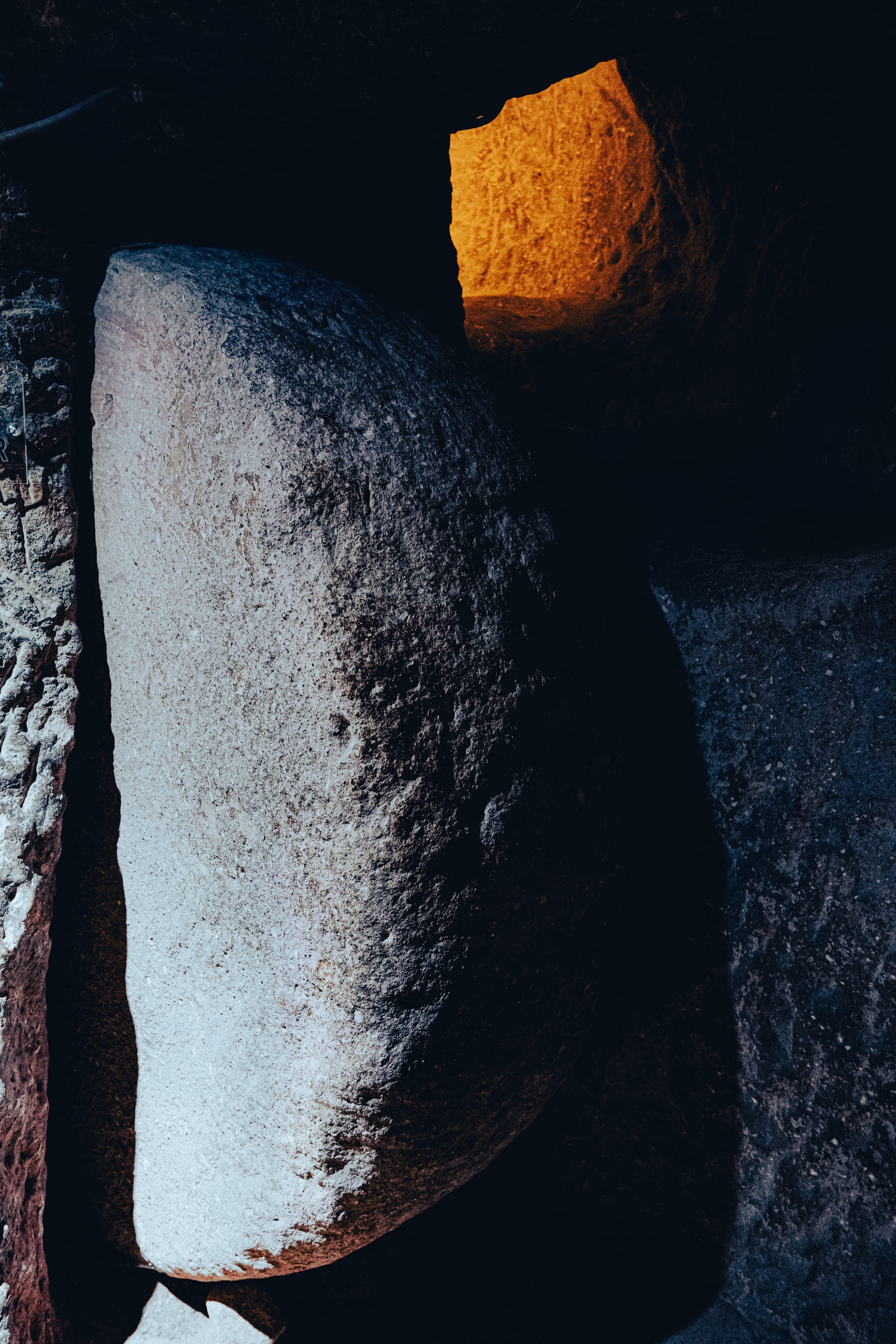
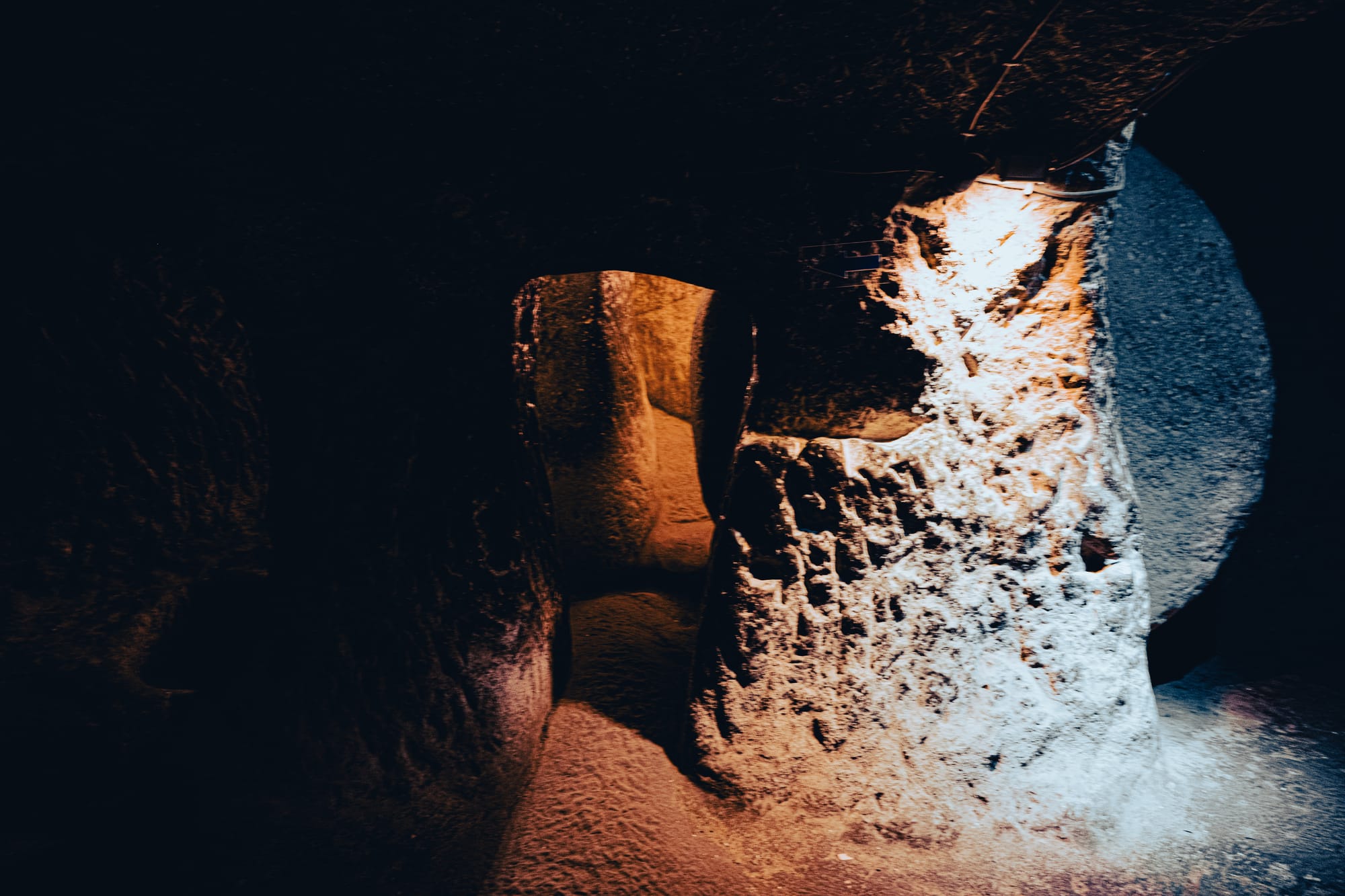
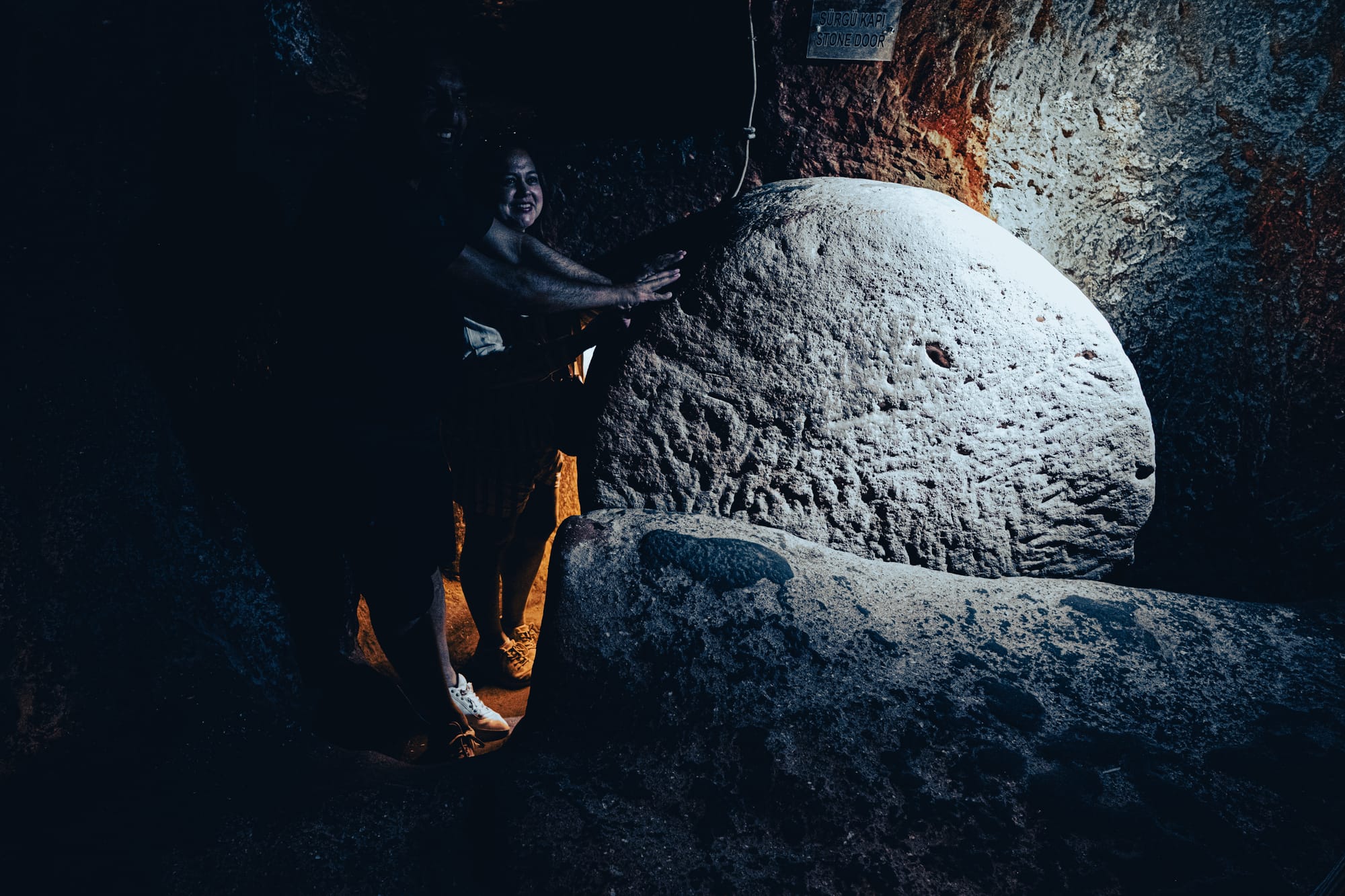
Massive stone doors once used to seal passages and protect inhabitants in Özkonak Underground City
Perhaps most fascinating are the long and narrow communication holes—so slim they function like capillary tubes—used for passing messages, ventilating, and even pouring hot oil or water on invaders while keeping residents safe inside.
Daily life beneath the surface
Life in Özkonak was a careful balance of survival and community. The first level, accessible from the outside, often served as stables for livestock, keeping essential animals close but separated from living quarters. Deeper levels contained living rooms, kitchens with soot-blackened ceilings, and communal areas where families gathered.
Food storage was a priority. The city’s cool, stable temperatures made it ideal for preserving crops, and large storage rooms were filled with clay jars of grains, legumes, and dried fruits. Wine cellars, carved directly into the rock, held grapes harvested from the surface vineyards. Residents also crafted olive oil in dedicated pressing rooms.
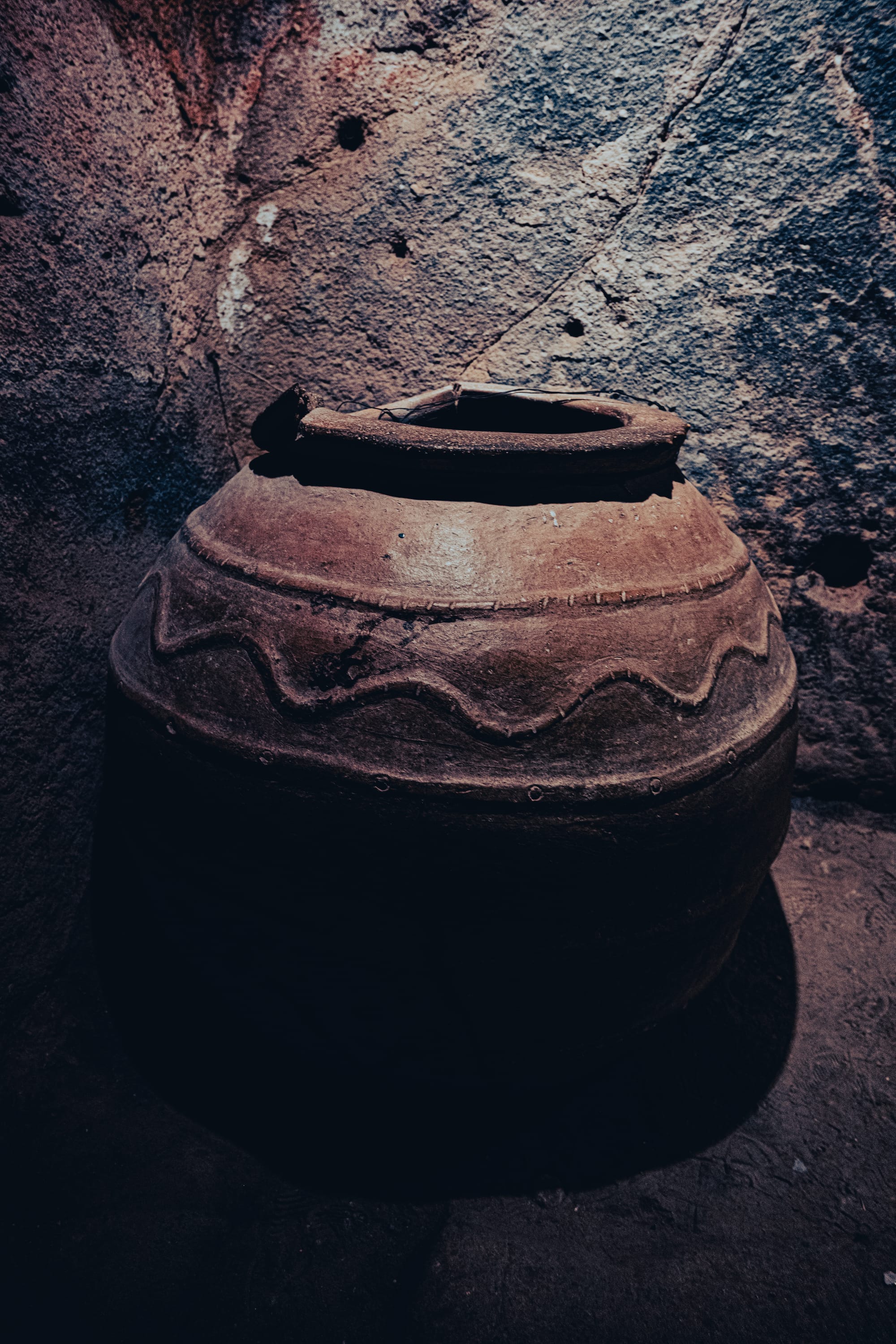
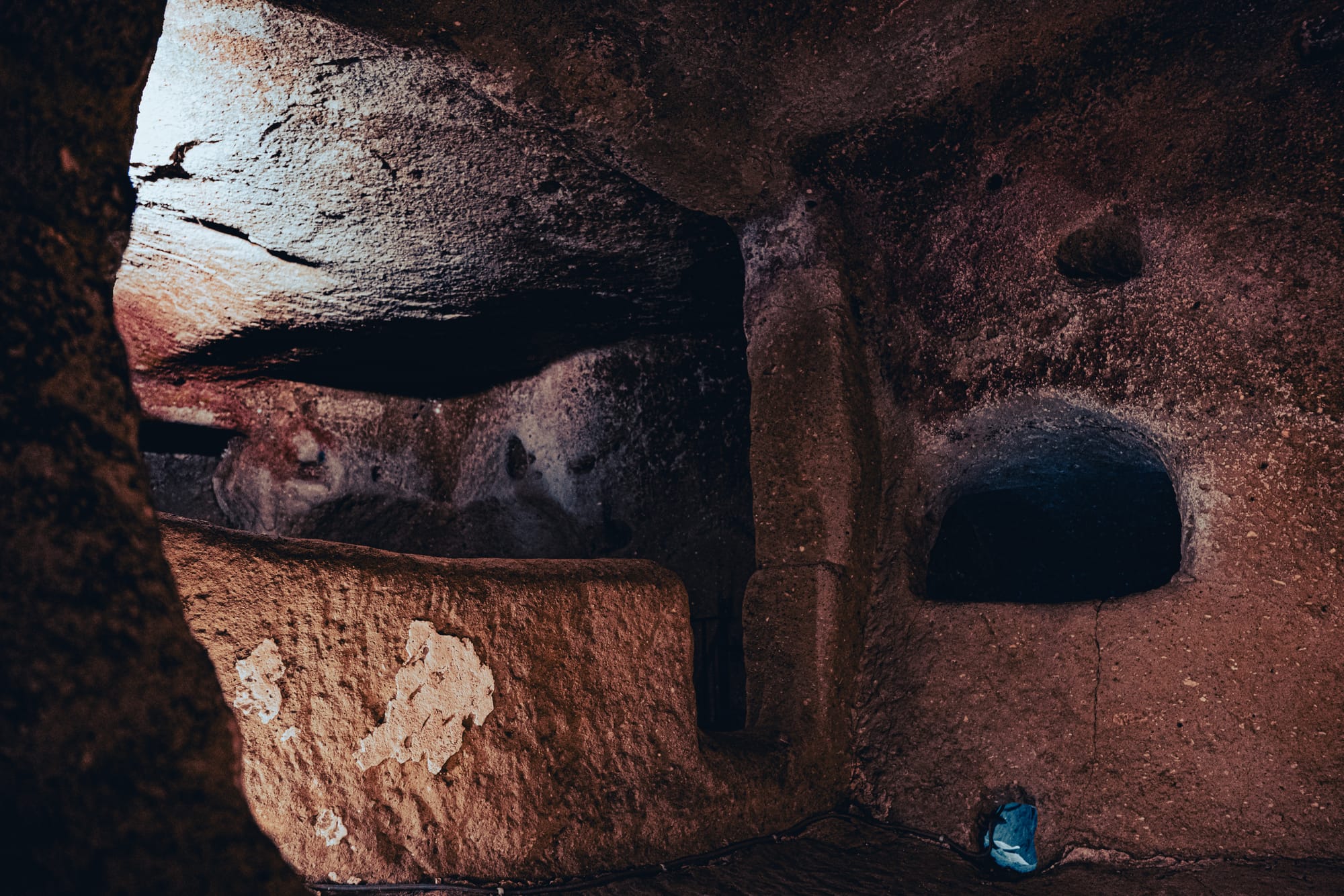
Ancient storage jars and carved alcoves showcasing daily life in Özkonak Underground City
Fresh water was accessed through wells, some of which connected to underground aquifers, ensuring supply even during sieges. Narrow corridors and hidden doors gave the underground city a maze-like quality, designed both to slow invaders and create defensible choke points.
Religious life was present too—small chapels and carved crosses on walls suggest that the city’s residents maintained Christian worship practices, even underground. Light was scarce, provided only by oil lamps, and the air was kept fresh by the extensive ventilation network.
Historical context and survival
While similar structures may have roots in Hittite times, Özkonak was most actively used during the Byzantine period. It provided refuge during waves of Arab raids between the 7th and 10th centuries and likely saw use again during later threats from Mongol and other invading forces.
Its position near trade routes meant that residents could maintain agriculture and commerce in peacetime, retreating below ground only when necessary. The compact design of Özkonak meant it could house entire communities for extended periods, protecting not just families but also their livelihoods—including animals, tools, and food stores.
The defensive ingenuity—rolling stone doors, narrow passageways, and vertical shafts—made it almost impossible for enemies to take the city quickly. Inhabitants could block off sections, trap invaders in dead-end tunnels, and communicate across levels without ever exposing themselves.
A word of caution
Exploring Özkonak is a fascinating experience, but it’s not for everyone. Many of the tunnels are low, narrow, and dimly lit. For visitors with claustrophobia, the confined spaces and lack of natural light can feel overwhelming.
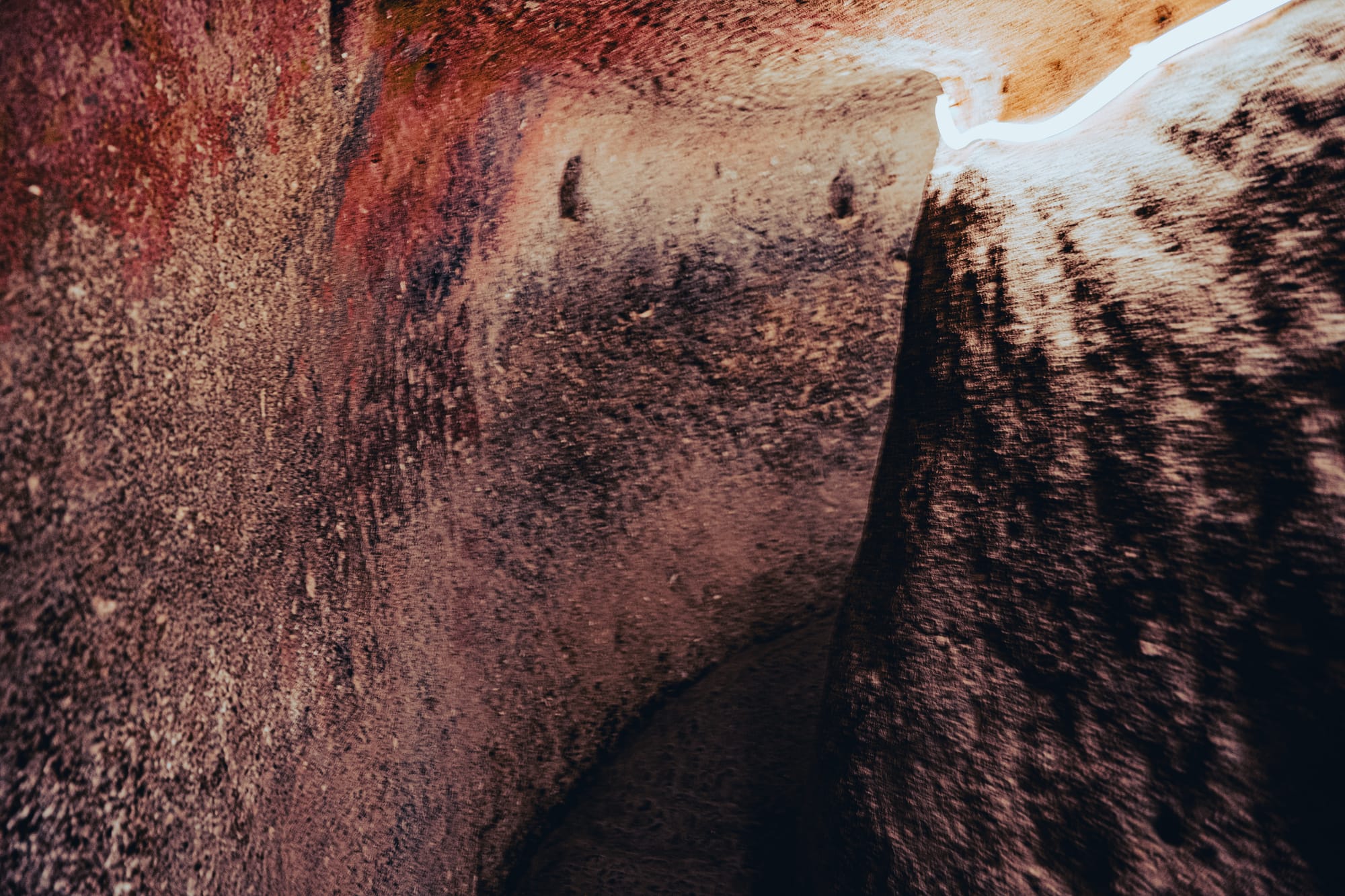
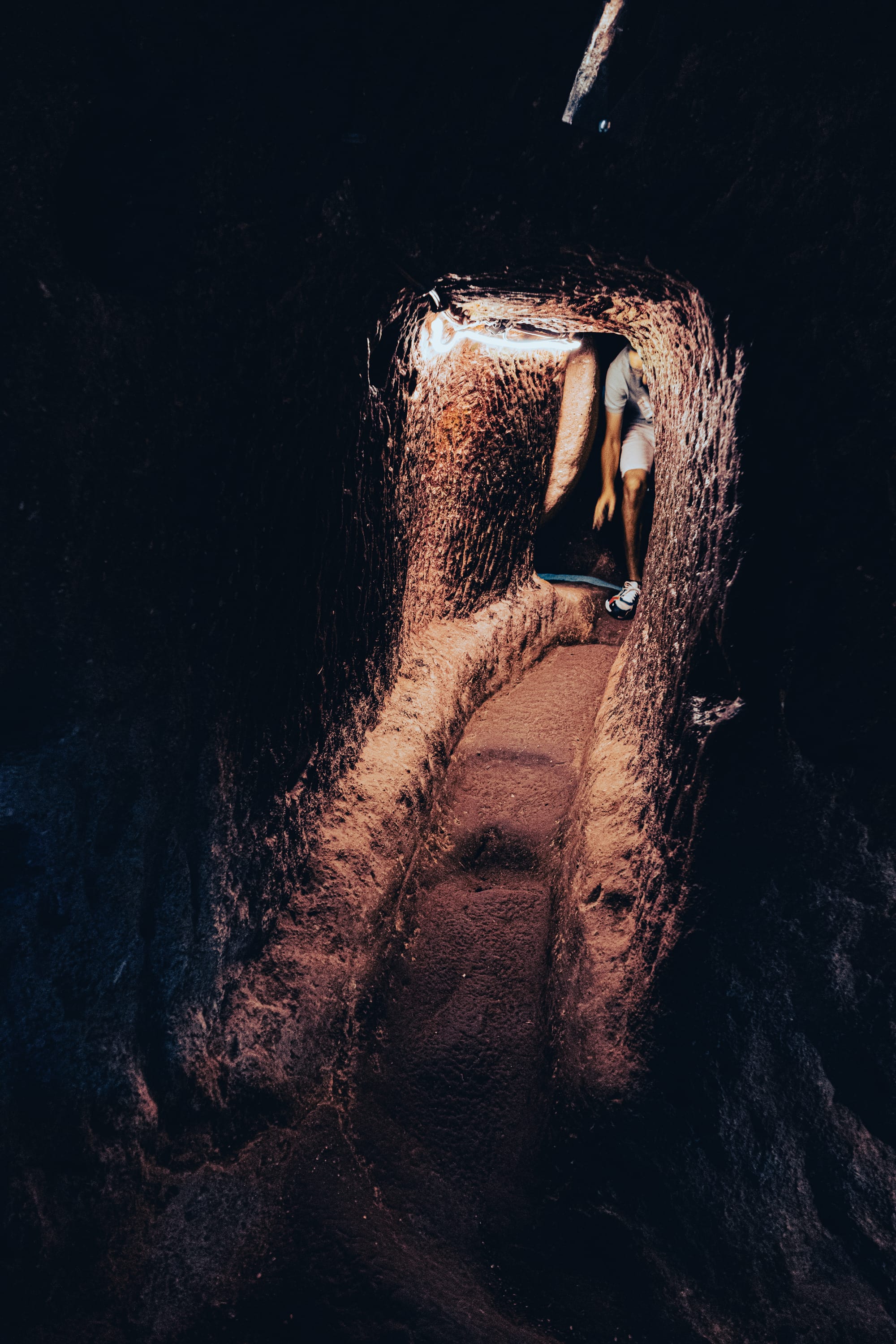
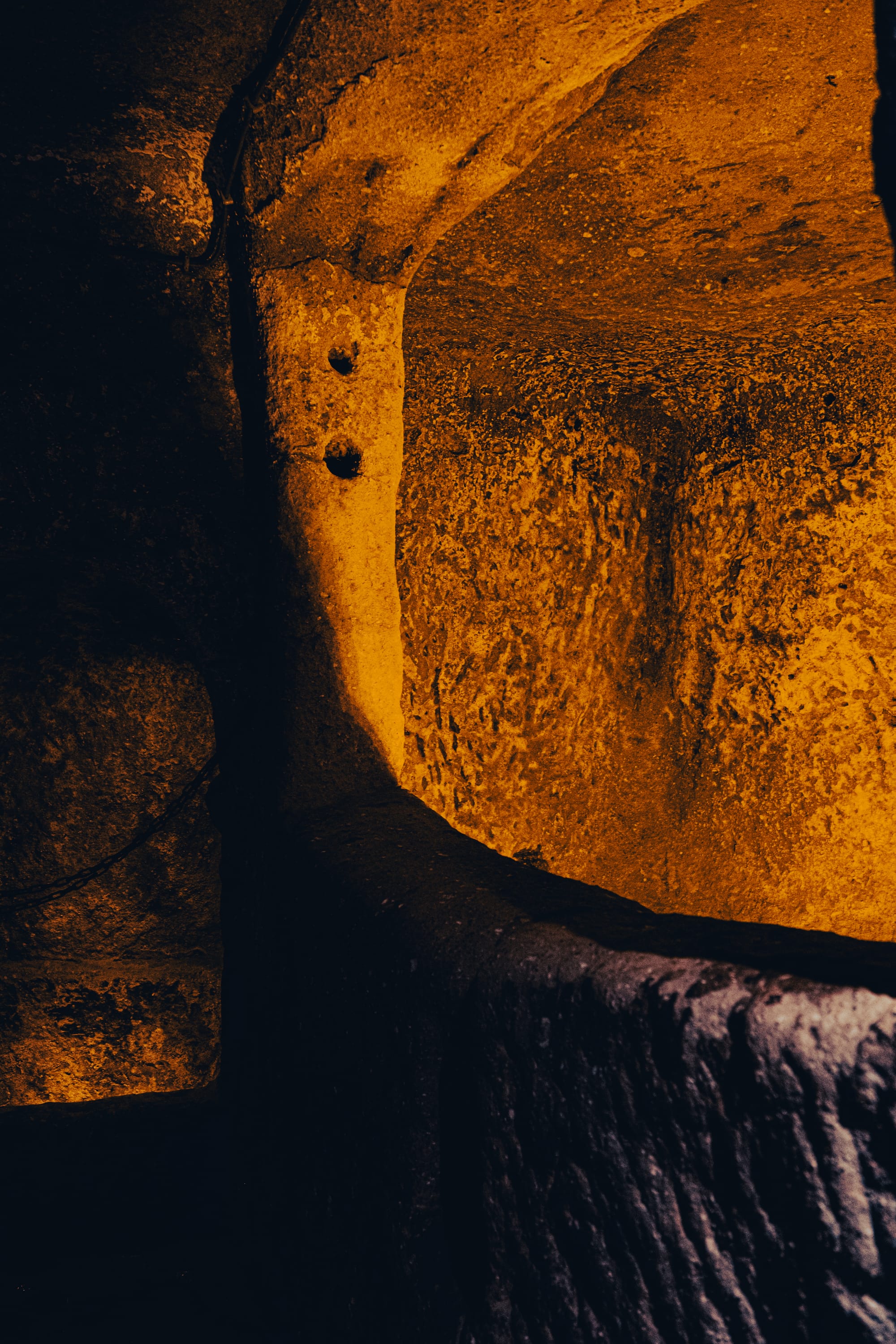
Exploring the narrow tunnels and chambers deep within Özkonak Underground City
Some passages require crouching or stooping for extended sections, and in busy times, the flow of people can mean waiting in enclosed spaces. If you’re unsure, it may be better to enjoy Cappadocia’s above-ground wonders instead.
Comparing Özkonak to Derinkuyu
While Derinkuyu Underground City shares many features with Özkonak, it is generally deeper and more expansive, stretching multiple levels far below the surface. Derinkuyu is known for its impressive vertical design and vast network of living spaces, whereas Özkonak stands out for its unique communication tunnels and more compact layout. Visiting both offers a fascinating contrast, showcasing how each underground city reflects different strategies in Cappadocia’s subterranean architecture. Read our full post on Derinkuyu to learn more.
Life underground
Özkonak Underground City is more than just another cave to explore—it’s a testament to human resilience, engineering, and adaptability. Everyday items like wine presses and ventilation shafts tell stories of survival and connection, while defensive innovations like rolling doors and capillary holes underscore the constant threat its inhabitants faced. Compared to its larger cousins, Özkonak offers an intimate, less tourist-crowded experience that feels both deeply historic and energizing.
Özkonak Underground City stands as a quiet monument to human innovation and survival. Hidden deep beneath Cappadocia’s tuff, it blends defensive ingenuity, daily life, and architectural brilliance into a fascinating underground world.
For the most seamless experience, we'd recommend the same Red & Green combined tour we did.






